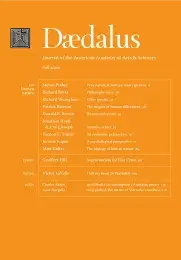The uniquely human in human nature
We can describe an object by listing its features, as manufacturers do when they provide a description of the parts of an assembly-required crib; or by comparing the object with one from a related category, as parents do when they tell their child that a zebra has stripes but a horse does not. Most answers to the question What is human nature? adopt this second strategy when they nominate the features that are either uniquely human or that are quantitative enhancements on the properties of apes. I adopt such a comparative posture here and describe seven psychological features that are either restricted to or enhanced in humans compared with our closest relatives, the chimpanzees. Four are of the first category; the other three are quantitative enhancements on chimpanzee talents.
The distinct psychological qualities of Homo sapiens are traceable to genetic changes that permitted the founder cells that become mature neurons to continue to divide for an extra seventy-two hours. Those additional cell divisions significantly expanded the size of the human cortex and contributed to the novel cognitive, emotional, and motor skills that emerge in humans over the course of development.
However, some scientists remain inexplicably resistant to acknowledging that any human quality is unique. When a linguist claims that only humans have a language with a grammar, a scientist will reply that chimpanzees can be taught to communicate with pieces of plastic. Jane Goodall’s discovery that chimpanzees use tools is celebrated because of its implication that my use of a hammer to hang my granddaughter’s recent artwork on the wall is not fundamentally different from a chimpanzee’s use of a twig to ferret out termites. But the modern synthesis in evolutionary biology does not demand that every feature that belongs to a particular family, genus, or species has a homologous structure or function in a related taxon. . . .
Access the full issue here.
